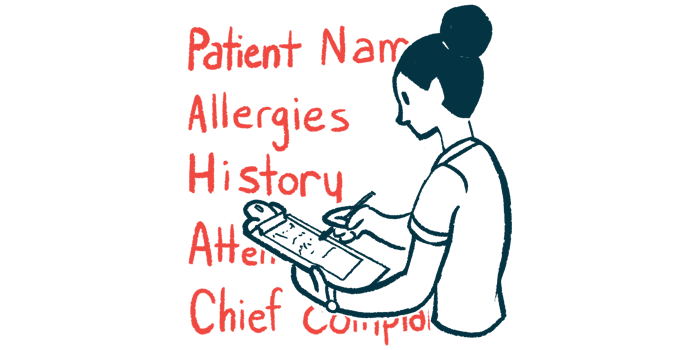Progression Without Relapse Also Common in RRMS, Patients Say
Majority of relapsing-remitting MS adults in German survey experience PIRA

Nearly two-thirds of people with relapsing-remitting multiple sclerosis (RRMS) report disease progression independent of relapses, according to a survey involving more than 4,500 multiple sclerosis (MS) patients in Germany.
This finding supports evidence pointing to progression independent of relapse activity (PIRA) as an underestimated contributing factor in RRMS. And it suggests that some of these patients may have transitioned to secondary progressive MS (SPMS) but hadn’t been yet diagnosed, the researchers noted.
Survey data also showed that mobility problems are common among SPMS and RRMS patients with severe disability, while symptoms like fatigue and cognitive difficulties are especially problematic in those with less disability.
These patient perspectives may help to better understand MS and its types, as well as guide treatment decisions, the researchers noted.
The study, “Self-assessment of people with relapsing-remitting and progressive multiple sclerosis towards burden of disease, progression, and treatment utilization — results of a large-scale cross-sectional online survey (MS Perspectives),” was published in Multiple Sclerosis and Related Disorders.
Patient self-assessments are an important way of monitoring chronic diseases like MS, but such perspectives are sometimes lacking in clinical practice.
“Discordant perception of the presence and severity of MS symptoms between healthcare professionals and people with multiple sclerosis (pwMS) may lead to an underestimation of symptom prevalence and relevance,” the researchers wrote.
“Therefore, determining patients´ perspectives is highly relevant for patient counseling and treatment decisions,” they added.
Work, leisure activities most affected, RRMS and SPMS patients say
A more detailed understanding of patient perspectives might also aid clinicians in identifying the sometimes-subtle conversion from RRMS to a progressive disease course, one marked by continuous worsening of disability independent of relapses.
Researchers in Germany conducted an online survey, called MS Perspectives, of patients to determine their views on disease symptoms, burden, and progression, as well as its impact on daily activities.
The survey — containing 36 items addressing sociodemographic and clinical features, as well as pharmacological and non-pharmacological treatment — was completed by 4,555 adults with MS in Germany between December 2021 and February 2022.
Most participants (85.2%) were women and 82% were ages 26 to 55. Overall, 69.2% reported to have RRMS (3,191 people), 15.1% SPMS (690 people), and 7.2% or 330 people had primary progressive MS. A total of 384 patients (8.4%) did not know their MS type.
The current study concerned findings relating to RRMS and SPMS patients, their symptoms, progression, and treatments. Other survey findings will be analyzed and reported separately.
Disability was determined based on reported expanded disability status scale (EDSS) scores, a clinician-rated evaluation of disability, for the about half of the patients in each group who knew their score. For those who didn’t, disability was self-assessed.
In total, about 72.3% of patients had no or mild-to-moderate disability, defined in the study as an EDSS score of 0 to 3.5, and 27.7% had marked or severe disability (a score of 4 or greater). Disability was more often reported as severe by SPMS patients than by RRMS patients (70% vs. 14.6%).
People with SPMS experienced a disease impact on daily life activities two times higher than those with relapsing MS. Specifically, 45.7% to 77.7% of SPMS patients reported a moderate-to-severe or complete loss of independence in daily activities, compared with 8.1–38% of those with RRMS.
Work ability and hobbies or leisure activities were the activities most significantly affected for both RRMS and SPMS patients, while changes in emotional experiences were reported mostly by those with RRMS, and mobility by SPMS patients.
Among RRMS and SPMS patients with severe disability, the most bothersome symptoms were problems with walking and moving. Patients with less disability were more often bothered by fatigue, cognitive problems, vision impairments, and numbness or tingling, particularly among RRMS patients.
“We suggest that especially the presence and severity of these frequent bothersome symptoms should be queried in daily clinical practice to identify potential therapeutic needs,” the researchers wrote.
Active MS, defined as the presence of relapse activity in the last six months, was reported by 35.9% of SPMS patients and 25.6% of RRMS patients.
While it was surprising to see a higher proportion of SPMS patients reporting relapse activity, “we cannot exclude that in addition to physician-confirmed relapses, symptom fluctuations were reported,” the researchers wrote.
A total of 4.8% of those with active SPMS and 31.1% of RRMS patients said they recovered completely from their last relapse. Notably, “higher disability was associated with higher frequency of residual symptoms after the last relapse,” the team wrote.
Relapse-independent progression reported by 65.8% of RRMS adults
Continuous relapse-independent progression within the previous year was reported not only by most SPMS patients (92.9%), but also by 65.8% of RRMS patients, particularly among those with marked or severe disability (88.9%).
“Given that a deterioration over 12 months may indicate transition to SPMS,” the team wrote, these patients “deserve special attention” in the clinical practice, and should be regularly assessed, “whether they fulfil the criteria for PIRA or SPMS.”
Findings here suggest that “in a relevant proportion of RRMS patients, above all, but not only with marked to severe disability, a transition to SPMS may have already occurred but had not been recognized by the patient or healthcare professional,” the team wrote.
This may be associated with insufficient attention to the transition or with physicians’ hesitation to diagnose SPMS “due to the limited number of approved DMTs for this disease course despite recent advances,” the researchers wrote.
“The challenge in clinical practice will be to confirm progression and, if so, to identify SPMS in order to make appropriate treatment decisions,” they added.
Among RRMS patients with no to mild-or-moderate disability, 61.8% also reported experiencing PIRA, the study noted.
Disease-modifying therapies (DMTs) were not used in 24.4% of RRMS cases and 43.5% of SPMS cases. Among DMT users, oral medications were the most common, and most patients had been taking their current medication for a year or longer.
A total of 30.5% of RRMS patients and 61.7% of SPMS patients were also receiving treatments to ease MS symptoms. These medications were more commonly reported among people on DMTs than among those not using such therapies.
Overall, “MS Perspectives gives an important insight in the self-assessed disease course and impact on daily life in a large-scale cohort of pwMS,” the researchers wrote.
The survey and study were funded by the German offices of Novartis, known as Novartis Pharma GmbH, and a company employee participated in the study’s analysis and writing.







